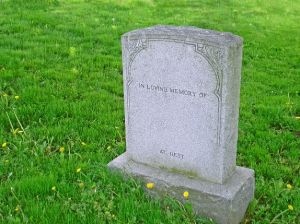A few years back, I had a conversation about horses that changed how I viewed my writing career. A dear friend of mine was telling me a story about when she was teaching her son how to ride a horse. She had grown up on a West Texas ranch and wanted to pass that legacy on to the next generation. One day he was thrown by the animal and landed hard. My friend went to her son to ensure that he hadn’t been seriously hurt. Once she had confirmed that he would be okay, she stood over him in the dust and heat of the Texan summer. Her boy was on the verge of tears, but she didn’t try to sooth him. Instead, she told him that he needed to choose if he really wanted to know how to ride. If he didn’t, he could sit and cry, and that would be fine. But “cowboys don’t cry,” and if he really wanted that life he would need to show her how tough he really was. He’d need to stand up and go show that animal that he wasn’t afraid of it. He needed to take back his power, right now or not at all.
There’s a reason that the phrase “get back in the saddle” is a cliché for starting again after a failure. If you’ve never ridden a horse, you can’t know what it feels like to have a thousand pounds of animal underneath you. To feel the shifting of muscle and sway of the saddle as your mount walks. Or know the sensation of speed and power as the horse runs. As a rider, you are only in control as much as the mount’s training or your own skill allows you to be. All the while, you are aware that falling or being thrown can be a bone breaking, paralyzing, or mortal experience. For new riders, it’s frightening. And for good reason.
Most humans are programmed to avoid painful situations. Sometimes it’s something we’ve already experienced, and others it is simply the anticipation of harm that warns us away. While this instinct helps us survive, it doesn’t allow us to grow. We only develop as individuals if we are challenged, pushed to leave our comfort zones, and are forced to adapt. In doing so, however, we risk mental, emotional, or physical hardship. And no one gets through life unscathed.
Little did my friend know that when she told me that story, I was struggling with my own fall, just of a less literal nature. I had recently been rejected by an agent that I had queried a few weeks before. It wasn’t even a personalized rejection, but rather a form letter that was addressed to “Dear Author”. I was embarrassed, angry with myself, and ashamed of my failure. I was still lying in the dirt, hurt and wallowing. However, I needed to make a decision.
I wasn’t considering quitting writing. Storytelling was and still is my passion. I had been warned that rejection letters were inevitable and that I would need to develop a thick skin to being told “thank you, but no.” However, rejection letters have a powerful effect on us writers because they feed the part of our brain teeming with doubt. I was trying to decide what that particular rejection meant for me and my story. Did I still believe in these characters? Did I still believe that the work represented the best of my skills? Was the problem something in my query letter or my manuscript? I didn’t know and so was paralyzed by indecision.
My friend’s story reminded me that I was letting the letter have power over my actions and needed to show it, and myself, that I wasn’t afraid of it anymore.
And so, I decided to reframe my problem. Quite literally. I went to the store and spent about five dollars on a plain, black, plastic picture frame. I printed out the first page of the rejection and hung it on the wall in my office. I stepped back, looked at my framed failure, and told myself aloud that this was a step in the process. I would fail again. I would succeed. I’d hang each on my wall because I owned them, they did not own me.
In the years since, I’ve added many more black frames to my wall. However, I’ve also added a few silver frames, my wins. There aren’t many silvers in comparison to the blacks, but they would not exist at all had I not decided to move past my fear and self-pity to keep pushing myself to grow. Each time I look at that wall, I am reminded of what those failures taught me, and that I have persevered. Despite the failures, I am still writing, still submitting, and still growing. With enough hard work and determination, I will have my writing career. I just need to keep dusting myself off after each and every failure and choosing what I really want.


